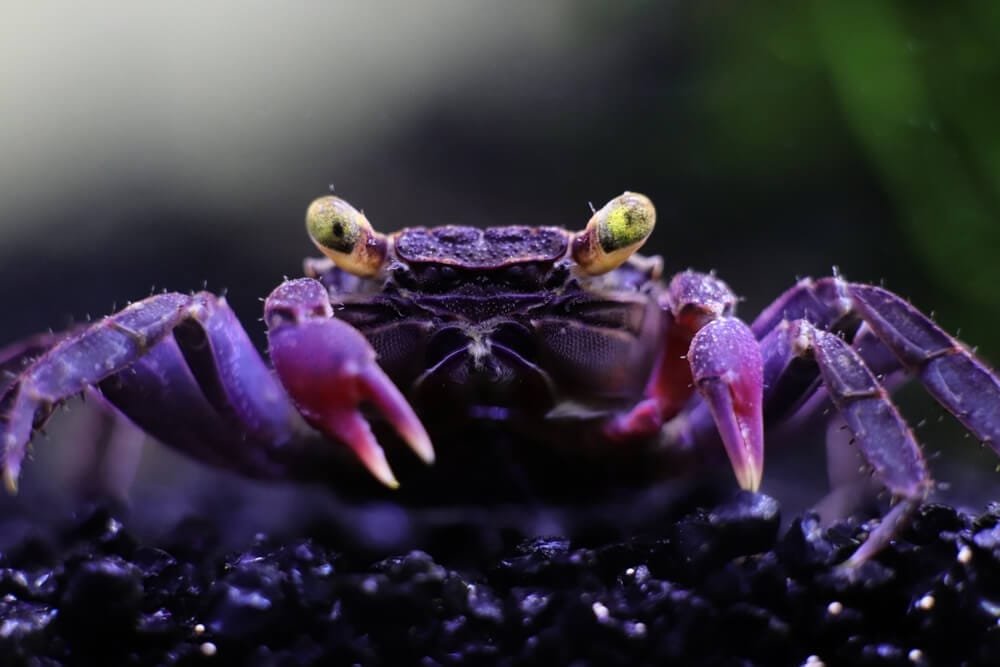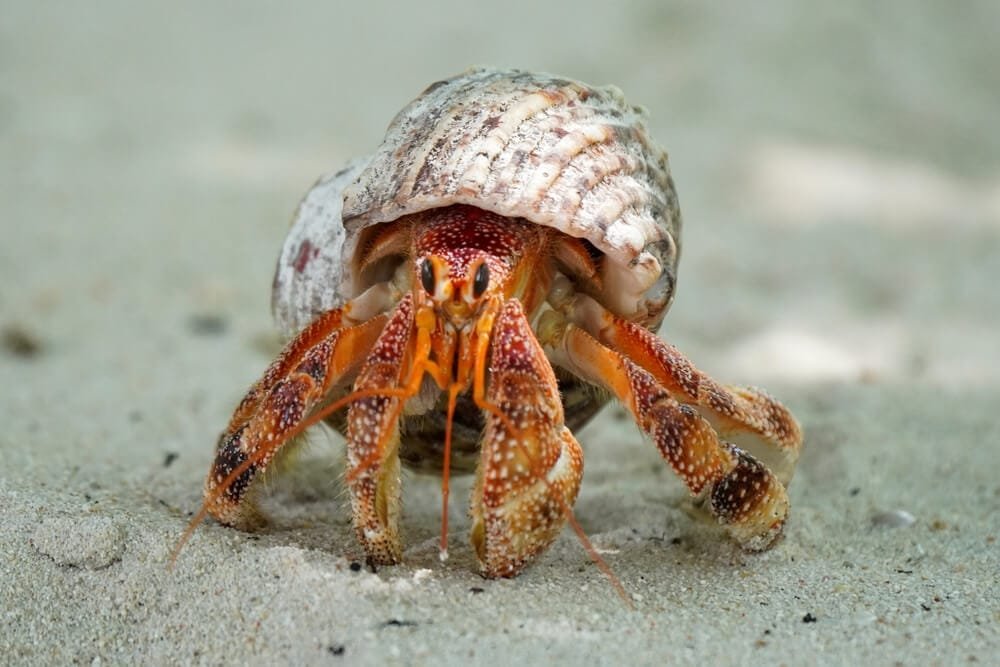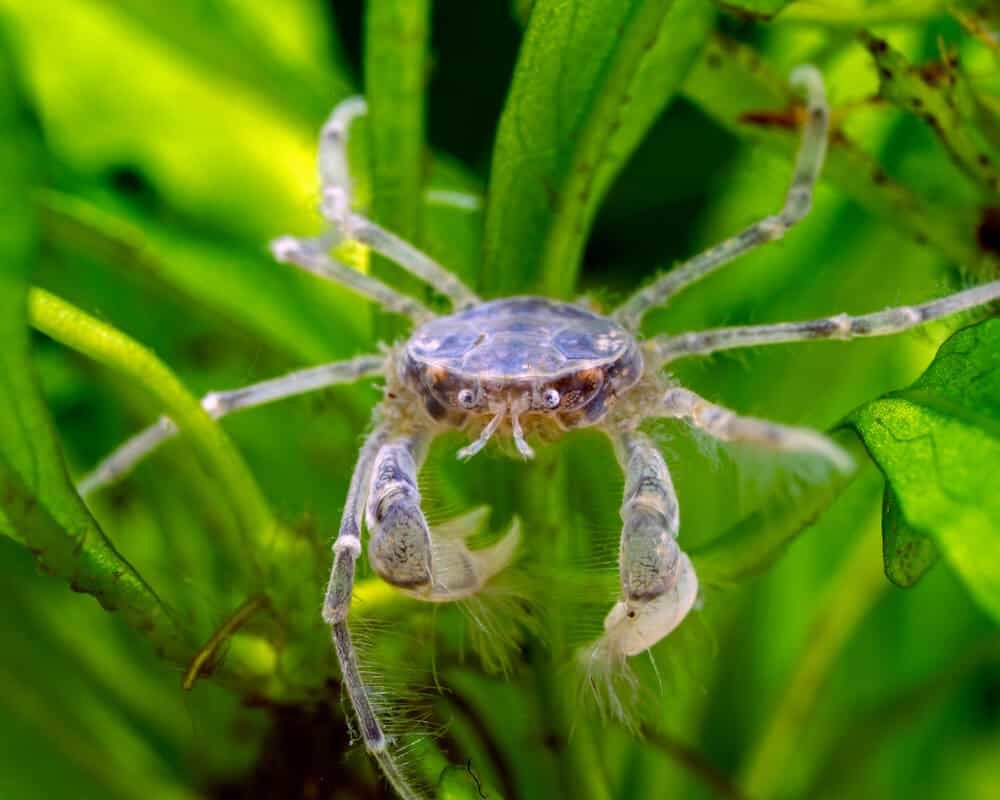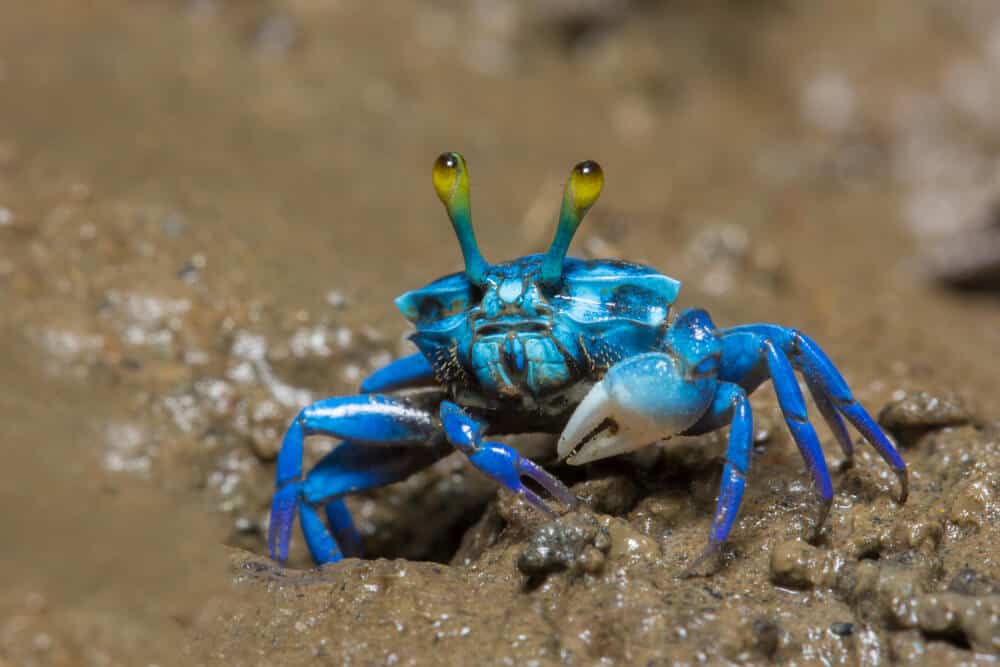The Ultimate Towuti Crab Care Guide: Tips And Tricks
Are you thinking of getting a Towuti crab as a new pet? Look no further! In this comprehensive guide, we will provide you with all the tips and tricks you need to know to ensure the best care for your adorable crustacean companion. From setting up the perfect habitat to providing the right diet and maintaining optimal water conditions, we’ve got you covered. So, grab your notebook and get ready to dive into the world of Towuti crab care!
Choosing the Right Tank
Tank Size
When choosing a tank for your Towuti crab, it’s important to consider their space requirements. A tank that is too small can lead to stress and aggression among the crabs. A general rule of thumb is to provide at least 5 gallons of space per crab. However, it’s always better to go bigger if you have the space and resources. A larger tank not only allows for more room to explore and climb but also provides better airflow and allows for a more natural environment.
Tank Lid
Towuti crabs are excellent climbers, so a secure lid is essential to prevent any escapes. Opt for a tight-fitting lid that can be locked or secured with clips. This will not only keep your crabs safe but also protect them from other household pets and prevent any accidents or injuries.
Substrate
Choosing the right substrate is crucial for creating a suitable habitat for your Towuti crabs. A mixture of sand and coconut fiber works well, as it mimics their natural environment. The substrate should be moist but not soaking wet, as excessive moisture can lead to bacterial growth and health issues for the crabs. It’s important to monitor the substrate regularly and maintain the proper humidity levels.
Temperature and Humidity
Maintaining the right temperature and humidity in the tank is vital for the health and well-being of your Towuti crabs. The ideal temperature range is between 75-85°F (24-29°C), with a relative humidity level of 70-80%. You can achieve these conditions by using a combination of a heat lamp or under-tank heater and a hygrometer to monitor humidity levels. It’s important to note that sudden temperature fluctuations can be stressful for the crabs, so try to avoid placing the tank in drafty areas or direct sunlight.
Lighting
While Towuti crabs don’t require specific lighting like reptiles, providing a natural day and night cycle is beneficial for their overall well-being. A regular room light cycle of 12 hours of light and 12 hours of darkness is sufficient. In addition, you can add a UVB light to benefit their overall health and mimic natural sunlight. Make sure to position the lights in a way that doesn’t overheat the tank or create any hot spots.
Setting Up the Habitat
Creating a Land and Water Area
Towuti crabs require both land and water areas in their habitat to meet their needs. One side of the tank should have an area filled with dechlorinated saltwater for them to submerge and swim in. The other side should provide a sandy substrate for them to burrow and explore. It’s essential to have a smooth slope or a ramp for easy access to both areas, as crabs are not strong swimmers and can drown if they can’t find their way out of the water.
Adding Decorations
Decorations play a vital role in creating a stimulating and enriching environment for your Towuti crabs. Provide a variety of natural decor, such as rocks, driftwood, and plants. These decorations not only create hiding places but also offer climbing opportunities and a sense of security for the crabs. Be sure to choose non-toxic materials and avoid sharp edges or small openings that could harm the crabs.
Providing Hiding Places
Towuti crabs are naturally shy creatures and need hiding places where they can retreat and feel safe. You can add coconut huts, caves, or tunnels made from PVC pipes to create hiding spots for your crabs. These hiding places also serve as molting caves, as crabs need a safe and secluded area to molt their exoskeleton. Make sure to provide enough hiding places for each crab in the tank to prevent aggression or competition for hiding spots.
Maintaining Water Quality
Proper water quality is crucial for the health of your Towuti crabs. Regularly test the water parameters, including temperature, salinity, and pH, to ensure they are within the appropriate range. Salinity should be maintained at around 1.021-1.025 specific gravity, and pH should be between 7.8-8.2. Use a reliable water conditioner to remove chlorine and chloramine from tap water, and perform partial water changes every two weeks to maintain water quality.
Ensuring Humidity Levels
Maintaining the right humidity levels is essential for the well-being of your Towuti crabs. A humidity level of 70-80% is recommended to replicate their natural tropical habitat. You can achieve this by misting the tank with dechlorinated water daily or using a reptile fogger or humidifier. It’s important to monitor the humidity levels regularly and make adjustments as necessary to avoid respiratory problems or dehydration for your crabs.
Feeding and Nutrition
Choosing the Right Food
Towuti crabs are opportunistic omnivores and require a varied diet to meet their nutritional needs. Feed them a combination of commercial crab food, such as pelleted and freeze-dried options, along with fresh fruits, vegetables, and protein sources. Good options include leafy greens, carrots, berries, shrimp, and crab-safe seafood. It’s important to provide a balanced diet and avoid feeding them too much of one type of food to ensure they get all the necessary nutrients.
Feeding Schedule
Establishing a regular feeding schedule is important for the overall health and well-being of your Towuti crabs. Offer small amounts of food once per day, preferably in the evening or just before lights-out. This mimics their natural feeding behavior and allows them to eat at their own pace. Remove any uneaten food after a few hours to prevent spoilage and maintain water quality in the tank.
Supplements and Treats
In addition to their regular diet, Towuti crabs can benefit from the occasional supplementation of calcium and other essential minerals. These supplements can be dusted onto their food or provided in the form of cuttlebones or mineral blocks. Treats, such as dried seaweed or brine shrimp, can also be given occasionally to provide variety and mental stimulation for your crabs.
Monitoring Food Consumption
Keeping track of your crabs’ food consumption is important for their overall health. Observe their eating habits and ensure they are eating regularly. If you notice any significant changes in appetite or weight loss, it may be a sign of illness or stress. Adjust their diet or consult a veterinarian specializing in exotic pets if you have concerns about their food consumption.
Handling Molted Exoskeletons
After your Towuti crab molts, it’s essential to leave the molted exoskeleton in the tank. The crabs will often eat the exoskeleton as a valuable source of nutrients. Removing the exoskeleton prematurely can deprive them of this essential resource. Leaving the molted exoskeleton in the tank also provides a natural source of calcium and aids in the molting process for other crabs in the tank.
Socialization and Tank Mates
Keeping Towuti Crabs Together
Towuti crabs are social creatures and can be kept together, provided there is enough space and resources for each crab. As mentioned earlier, it’s crucial to provide ample hiding places to prevent aggression and allow the crabs to establish their territories. Monitor their behavior closely and separate any crabs that show signs of excessive aggression or fighting.
Introducing New Crabs
When introducing new Towuti crabs to an established tank, it’s important to do so gradually to minimize stress and potential conflicts. Use a separate quarantine tank to observe and monitor the new crabs for any signs of illness or parasites before introducing them to the main tank. Slowly introduce the new crabs by placing them in a separate enclosure within the main tank and allowing them to adjust before fully integrating them.
Choosing Compatible Tank Mates
Adding tank mates to your Towuti crab habitat can provide additional visual interest and mimic a more natural ecosystem. However, it’s important to choose compatible species that have similar temperature, humidity, and dietary requirements. Good tank mates for Towuti crabs can include small freshwater fish, such as guppies or tetras, and certain species of snails or shrimp. Avoid adding aggressive or predatory species that may harm or stress the crabs.
Handling Aggression
While Towuti crabs are generally peaceful, conflicts and aggression can occur, especially during feeding or molting. Keep an eye out for any signs of aggression, such as aggressive posturing, pinching, or excessive chasing. If aggression becomes an issue, provide more hiding places and separate any aggressive or bullied crabs into their own enclosures until they can be properly reintroduced.
Observing Behavior for Signs of Stress
It’s important to closely observe the behavior of your Towuti crabs and look for any signs of stress or illness. Signs of stress can include lethargy, loss of appetite, excessive hiding, shell damage, or changes in appearance or behavior. If you notice any concerning behavior, consult a veterinarian specializing in exotic pets for further guidance and treatment options.
Maintaining Water Quality
Water Parameters
Proper water parameters are crucial for the health and well-being of your Towuti crabs. Regularly test the water temperature, salinity, and pH levels to ensure they are within the appropriate range. Use a reliable aquarium thermometer and hydrometer or refractometer to monitor these parameters. It’s important to maintain a stable environment for your crabs to prevent stress and potential health issues.
Filtering and Circulation
A proper filtration system is essential for maintaining water quality in your Towuti crab habitat. Use a filter that is appropriate for the size of your tank and provides both mechanical and biological filtration. Ensure that the filter is adequately sized to circulate the water effectively and prevent stagnant areas. Regularly clean and maintain the filter to prevent debris buildup and maintain optimal water conditions.
Cleaning and Water Changes
Regular tank maintenance is important to keep your Towuti crab habitat clean and prevent the accumulation of waste and toxins. Perform partial water changes every two weeks, replacing approximately 25% of the water with fresh, dechlorinated water. Take care not to disturb the substrate or any molting crabs during water changes. Additionally, use a siphon or gravel vacuum to remove any uneaten food, waste, or debris from the tank regularly.
Monitoring Ammonia and Nitrate Levels
Ammonia and nitrate levels can be harmful to your Towuti crabs if they become too high. Regularly test the water for ammonia and nitrate levels using appropriate testing kits. Ammonia levels should be at or below 0.25 ppm, and nitrate levels should be kept below 20 ppm. If levels are elevated, perform water changes and address any issues with filtration or overfeeding that may be causing the imbalance.
Preventing Algae Growth
Algae growth is a common issue in tanks with adequate lighting and nutrient levels. While some algae growth is natural and can provide a food source for your Towuti crabs, excessive growth can lead to water quality problems and reduced visibility in the tank. Regularly clean the tank walls and decorations to remove algae, and adjust the lighting duration if necessary to prevent excessive growth. Introducing algae-consuming snails or shrimp can also help control algae growth.
Handling and Care
Handling Techniques
While it’s generally best to minimize handling of Towuti crabs to reduce stress, there may be times when you need to handle them for maintenance or health checks. When handling them, it’s important to do so with care and caution. Gently scoop them up from underneath, supporting their body and limbs. Avoid gripping or squeezing the crabs, as this can cause injury or stress.
Avoiding Injury
When caring for Towuti crabs, it’s important to create a safe environment and handle them carefully to avoid injury. Avoid any sharp or rough edges in the tank that could cause cuts or abrasions on the crabs’ delicate exoskeletons. Also, be mindful of their claws and avoid any unnecessary contact with them. If a crab feels threatened or scared, it may pinch in defense, so always approach them slowly and cautiously.
Inspecting and Caring for Claws
Inspecting your Towuti crabs’ claws regularly is important for their overall health and well-being. Check for any signs of injuries, infections, or abnormalities in the claws. Trim any overgrown or damaged claws with aquarium-specific scissors, taking care not to cut too close to the joint. If you are unsure about trimming the claws yourself, consult a veterinarian or an experienced crab keeper for guidance.
Examining the Shell
The shell is a vital part of a Towuti crab’s anatomy, providing protection and housing their soft abdomen. Regularly examine the crabs’ shells for any signs of damage, wear, or inappropriate fit. Damaged or ill-fitting shells can cause discomfort and stress for the crabs. Provide a variety of appropriately sized shells in the tank for the crabs to choose from, and monitor their shell usage to ensure they are finding suitable homes.
Observing Molting
Molting is a natural process for Towuti crabs, where they shed their exoskeleton to grow. It’s essential to provide a safe and secluded area for the crabs to molt in, as this process leaves them vulnerable to injury and predation. During the molting process, be sure to avoid disturbing or handling the crab, as this can interrupt the molting process and cause stress or injury. Monitor the crab closely after molting to ensure they have successfully shed their exoskeleton and are recovering well.
Health and Common Issues
Signs of Illness
Being able to recognize signs of illness in your Towuti crabs is essential for early detection and treatment. Common signs of illness can include lethargy, loss of appetite, weight loss, abnormal shell appearance, unusual behavior, cloudy or discolored eyes, or abnormal coloration. If you notice any of these signs, it’s important to consult a veterinarian specializing in exotic pets for diagnosis and treatment options.
Common Crab Diseases
Towuti crabs can be susceptible to various diseases and ailments. Some common crab diseases include shell rot, bacterial infections, fungal infections, and parasites. These can be caused by poor water quality, stress, inadequate nutrition, or exposure to pathogens. Regularly monitor the health of your crabs and take immediate action if you notice any signs of illness. Quarantine and treat affected crabs separately to prevent the spread of disease.
Treating Parasites
Parasites can be a common issue for Towuti crabs, especially if they have been introduced to the tank through new additions or contaminated food or water. If you suspect your crabs have parasites, consult a veterinarian specializing in exotic pets for appropriate diagnosis and treatment options. Follow their guidance on medication and treatment protocols, and make sure to quarantine affected crabs to prevent the spread of parasites to other tank inhabitants.
Dealing with Shell Issues
Shell issues, such as damaged or ill-fitting shells, can cause discomfort and stress for Towuti crabs. If you notice any problems with the crabs’ shells, it’s important to provide a variety of suitable shell options in the tank for them to choose from. Avoid removing the crabs from their current shells forcibly, as this can cause injury or stress. In most cases, the crabs will change shells when they feel the need for a new one.
Managing Injury and Stress
Injuries and stress can occur in Towuti crabs, especially during aggressive interactions or improper handling. If you notice any injuries, such as cuts, abrasions, or missing limbs, it’s important to provide a stress-free environment and optimal water conditions for the crabs’ healing process. Avoid handling injured crabs and provide them with extra hiding places and a balanced diet to aid in their recovery. Monitor their progress closely and seek veterinary care if necessary.
Reproduction and Breeding
Mating Behavior
Towuti crabs exhibit complex mating behaviors, involving courtship rituals and specific mate selection. Males will often fight for the attention of females, using their claws and other displays of dominance. Once a male successfully attracts a female, they will mate, with the female carrying and eventually releasing fertilized eggs into the water.
Creating a Breeding Tank
If you are interested in breeding Towuti crabs, setting up a separate breeding tank is recommended. This tank should have specific conditions conducive to breeding, including appropriate temperature, humidity, and water quality. Providing ample hiding places and a shaded environment can also encourage successful breeding behavior. Consult with experienced breeders or specialized resources for detailed guidance on creating a breeding tank setup.
Egg-laying and Incubation
After mating, female Towuti crabs will carry fertilized eggs on their abdomen until they are ready to hatch. The incubation period can last several weeks or even months, depending on various environmental factors. During this time, it’s important to provide the female with optimal conditions and a stress-free environment. Avoid disturbing or handling gravid females, as this can disrupt the incubation process.
Caring for Hatchlings
Once the Towuti crab eggs hatch, the larvae will enter the water as planktonic organisms. At this stage, caring for the hatchlings becomes challenging, as they have specific dietary requirements and need access to microscopic food sources. If you wish to raise the hatchlings, it’s crucial to research their specific needs and be prepared to provide appropriate food and rearing techniques.
Separating Males and Females
To prevent unwanted breeding and aggression among Towuti crabs, it’s important to separate males and females if breeding is not desired. This can be achieved by maintaining separate tanks for males and females or through careful monitoring and isolation of males during the female’s molt and egg incubation phases. Regularly assess your tank population and make necessary adjustments to ensure the well-being and harmony of your crabs.
Frequently Asked Questions
What should I feed my Towuti crab?
Towuti crabs require a varied diet that includes commercial crab food, fresh fruits and vegetables, and protein sources. Offer a balanced diet that includes options like leafy greens, carrots, berries, shrimp, and crab-safe seafood. It’s important to provide a diverse range of food and avoid overfeeding or relying too heavily on one type of food.
How often should I clean the tank?
Regular tank maintenance is essential for the health and well-being of your Towuti crabs. Perform partial water changes every two weeks, removing approximately 25% of the water and replacing it with fresh, dechlorinated water. Additionally, regularly clean the tank walls, decorations, and substrate to remove any uneaten food, waste, or debris.
Can Towuti crabs live with other species?
Towuti crabs can coexist with certain compatible tank mates, such as small freshwater fish, certain species of snails, or shrimp. However, it’s important to carefully select tank mates that have similar temperature, humidity, and dietary requirements. Avoid adding aggressive or predatory species that may harm or stress the crabs.
How do I tell if my crab is molting?
Molting is a natural process for Towuti crabs, where they shed their exoskeleton to grow. Signs that a crab is about to molt may include increased hiding, reduced appetite, and a general lethargy or slowdown in activity. Once the crab has molted, you will see an empty exoskeleton in the tank. It’s important to avoid disturbing or handling the crab during this vulnerable time, as any interruptions can be detrimental to the molting process.
Are Towuti crabs suitable for beginners?
Towuti crabs can be suitable for beginners who are willing to provide the proper care and attention they require. However, they do have specific needs and can be more challenging to care for compared to some other pet options. It’s important to thoroughly research their care requirements and be prepared to provide a suitable habitat, nutrition, and maintenance for their well-being.
Conclusion
Caring for Towuti crabs can be a rewarding and enjoyable experience. By understanding their specific needs, providing a suitable habitat, and offering proper nutrition, you can ensure the health and well-being of your crabs. Regular observation, regular maintenance, and early detection of any issues are key to keeping your Towuti crabs happy and thriving. Remember to consult with knowledgeable professionals and resources whenever needed to provide the best care possible for your beloved Towuti crab companions.



